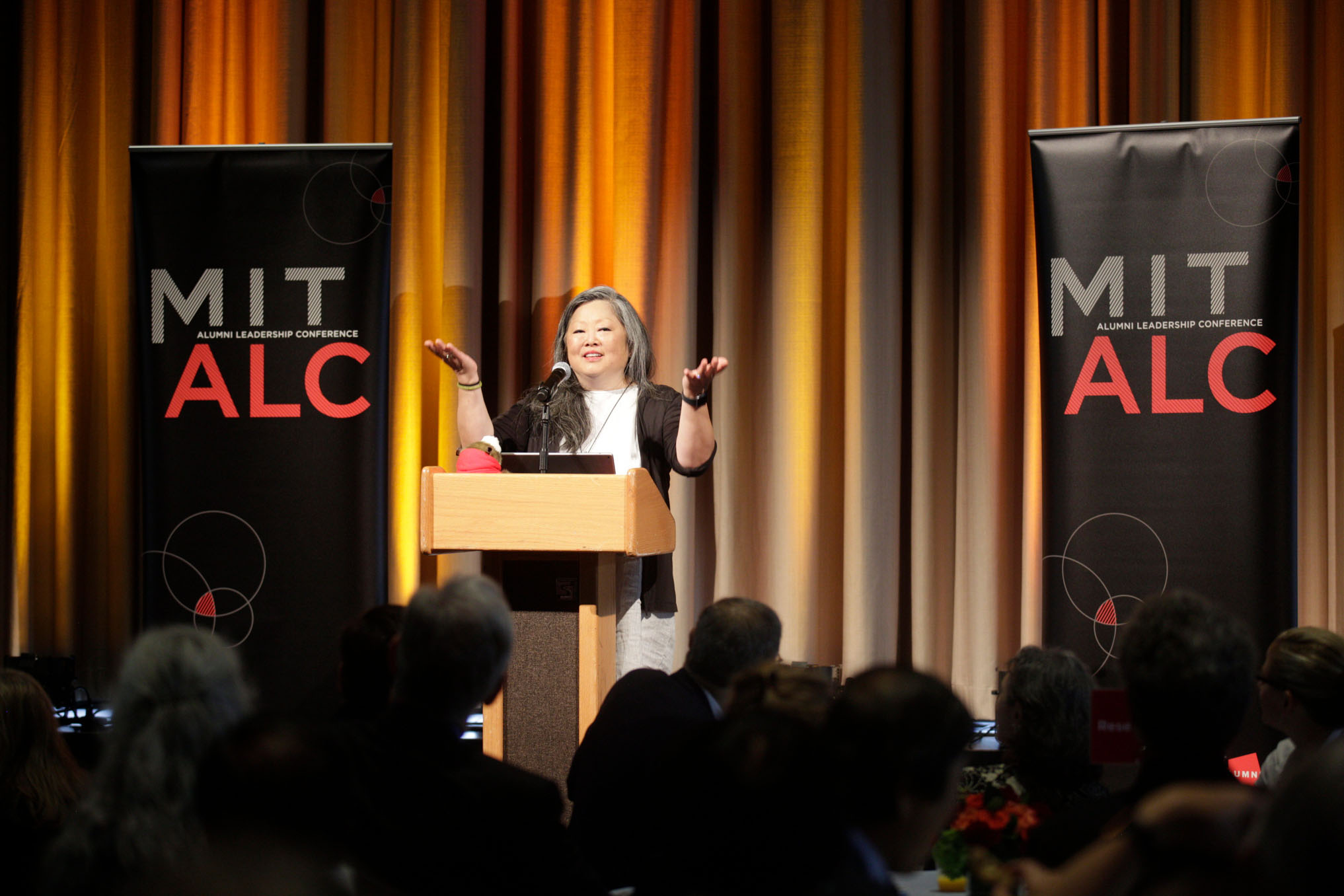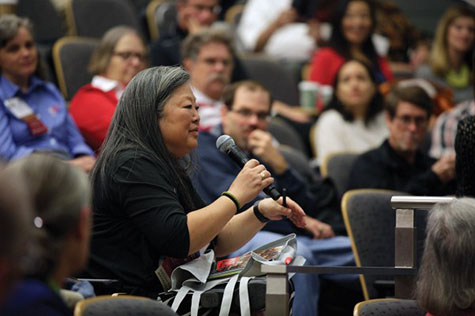Volunteer Extraordinaire Transitions to Alumni Association President
-
-
slice.mit.edu
Filed Under
Recommended


What connection runs through all these pursuits? “Working with people I enjoy being with is probably the most important thread,” Park says. For her class, she has worked with old friends and met new ones. While on the MIT Corporation, she saw Institute operations from a strategic level—a chance she will have again as she rejoins the Corporation as part of her presidency.
Park has also enjoyed new connections working with the Priscilla King Gray Public Service Center and by supporting creative arts experiences as a member of the Council for the Arts at MIT (CAMIT). She first worked with CAMIT as a student, when she won a design competition for the group’s logo—the same one that is used today. As an undergrad, she became friends with Priscilla King Gray and president emeritus Paul Gray ’54, SM ’55, ScD ’60, a relationship that continues to inspire her. Her efforts resulted in the Alumni Association’s highest honor, the Bronze Beaver, in 1997.
“I’m very people-oriented,” she says. “Everything I’m successful at involves people.” Through her years of volunteering, she has honed new skills, she adds: “I remember feeling somewhat intimidated but now, with added experiences, I’ve gotten better at being a more influential volunteer.”
Even at home in Arlington, Massachusetts, Park is never far from the MIT atmosphere. She met her husband, Jacob Friis, SM ’90, while he was a grad student at Sloan. He is founder and president of the consulting firm Management Diagnostics and honorary consul at the Danish consulate in Boston. Their son, Erick Friis, is a sophomore studying computer science and electrical engineering; he particularly enjoys working with his fraternity, Delta Tau Delta, first as house manager and now as treasurer. Park’s daughter, Katie, plans to study at Brown University in the fall.
What aspect of Park’s MIT experience has been most useful professionally?
“I actually think it was my extracurriculars,” she says. “I was very active as a student doing all sorts of things, and I learned how to move groups.” Learning how to plan projects has also been critical, she says, particularly having the vision to identify a problem or objective, define the solution, and marshal the resources to get results.
For 25 years, Park has focused on strategic management of transportation and infrastructure capital assets. She began her career at the Massachusetts Division of Capital Planning and Operations. In the 1990s, she joined Cambridge Systematics, a transportation planning firm, ultimately becoming a VP. After working on the Central Artery/tunnel project, she got involved with transportation research, and she now chairs the Technical Activities Council of the Transportation Research Board, a volunteer role. In 2006, she cofounded Spy Pond Partners, a strategic planning group that specializes in transportation performance and management; she now serves as its president.
“One big challenge area is that we have deteriorating transportation infrastructure at all levels, and insufficient funds to maintain it in a state of good repair,” she says. “We are trying to figure out how to maximize the funds we have to make sure the transportation system is safe.”
Park plans to bring one of her professional skills—using data to solve problems—to her job as Association president. “We want to know more about alumni so we can match their interests to what MIT and other alumni have to offer,” she says. Examples might include connecting alumni who have school-age children to MIT’s K-12 programs or informing arts-oriented alumni about performances and visual art events on campus. Her goal, she says, is to make stronger connections between “what we offer at MIT and the extended MIT community and alumni who may be interested.”
This article originally appeared in the July/August 2017 issue of MIT Technology Review magazine.







